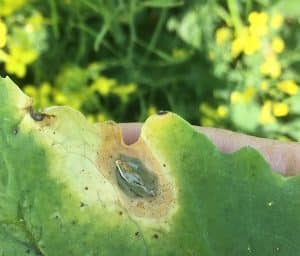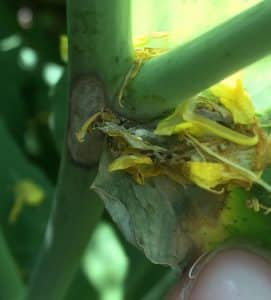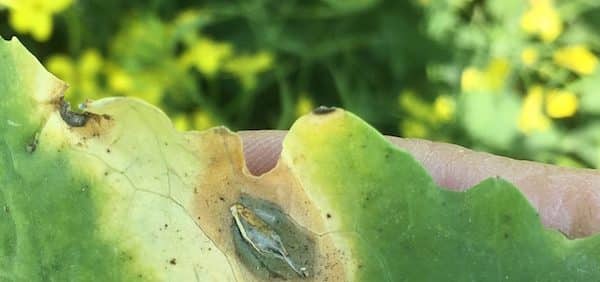The application window for most fungicides closes at 50% flower. (See the product table at the bottom of the article.) This is peak flower when the field is at its yellowest.
If conditions are dry at early flower and then it rains at 40% to 50% flower, spraying at the end of the window may be effective. This would be especially true if moisture also promoted a longer flowering window due to later compensatory growth. With lower seeding rates resulting in more branching, canola fields can be at 50% flower for a week or more.


In general, late applications are not as effective as applications at 20% flower because early infection tends to cause the most yield loss. (But not always.)
Remember that fungicide does not provide a curative benefit, so any infection present before application will not be stopped. A late application may stop subsequent infection, but infection that is already present can spread throughout the plant and from plant to plant in cases of extreme lodging, reducing the effectiveness of this late application.
Split applications (two lower rate applications 7 to 14 days apart as specified on the product label) can be worthwhile if conditions are good for fungal growth and the crop flowers for a long period. Split applications might also be best for crops with plants at multiple stages. The first application can be made when the first plants reach recommended staging. If necessary, a second application can be made when the remaining plants are ready to be sprayed. Not all products are registered for a split application.
Applications after 50% flower are not on fungicide labels, and may be inside the pre-harvest interval for some fungicides.
[supsystic-tables id=’2′]
Further reading:
Sclerotinia stem rot management
Keep It Clean guidelines
Factors in the spray decision
